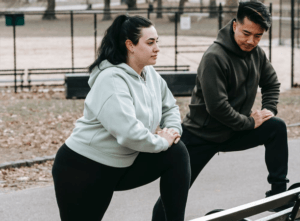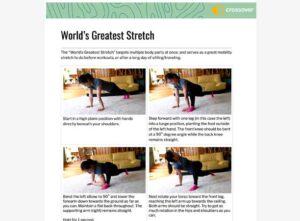IMPROVING YOUR FLEXIBILITY—WHY AND HOW
1
Learn. Find out about the health benefits of stretching.
2
Practice. Follow along to the videos made by our Coaches.
3
Let us help. We’ll work together to make a plan for you.
Expert Guidance Along the Way
-
Brendon Rearick, CFSCFitness Program ManagerBrendon is the Fitness Program Manager at Crossover. His drive to be the best version of himself led him to co-found Certified Functional Strength Coach, a fitness education company to certify trainers, for which he travels and coaches for often. Brendon holds a degree in Kinesiology from the University of Massachusetts Amherst.
-
Emily Jennings, CFSC, FSTFitness CoachEmily is a Certified Strength Coach and earned her Bachelor's degree in Exercise Science from Lindenwood University, where she played volleyball on scholarship. Always curious and wanting to learn more, she attended a Fascial Stretch Therapy course and many other courses that enabled her to help people move even better and feel great.
-
Jonathan Polidoro, CFSC, CSCSFitness CoachJon is a Fitness Coach at Crossover who earned his Bachelor’s degree in Physical Education from West Chester University of Pennsylvania. He has extensive experience helping workers balance their hectic and stressful schedules with fitness and biometric testing. Jon believes fitness should enrich someone’s life, not consume it.



 Stretching as part of your cool down after exercise is ideal. But if you like to use it as a warmup too, move your body to increase your circulation first. This is especially important if you have been sitting for a long time. Walk or do other light activity for 5–10 minutes, then stretch.
Stretching as part of your cool down after exercise is ideal. But if you like to use it as a warmup too, move your body to increase your circulation first. This is especially important if you have been sitting for a long time. Walk or do other light activity for 5–10 minutes, then stretch. 

